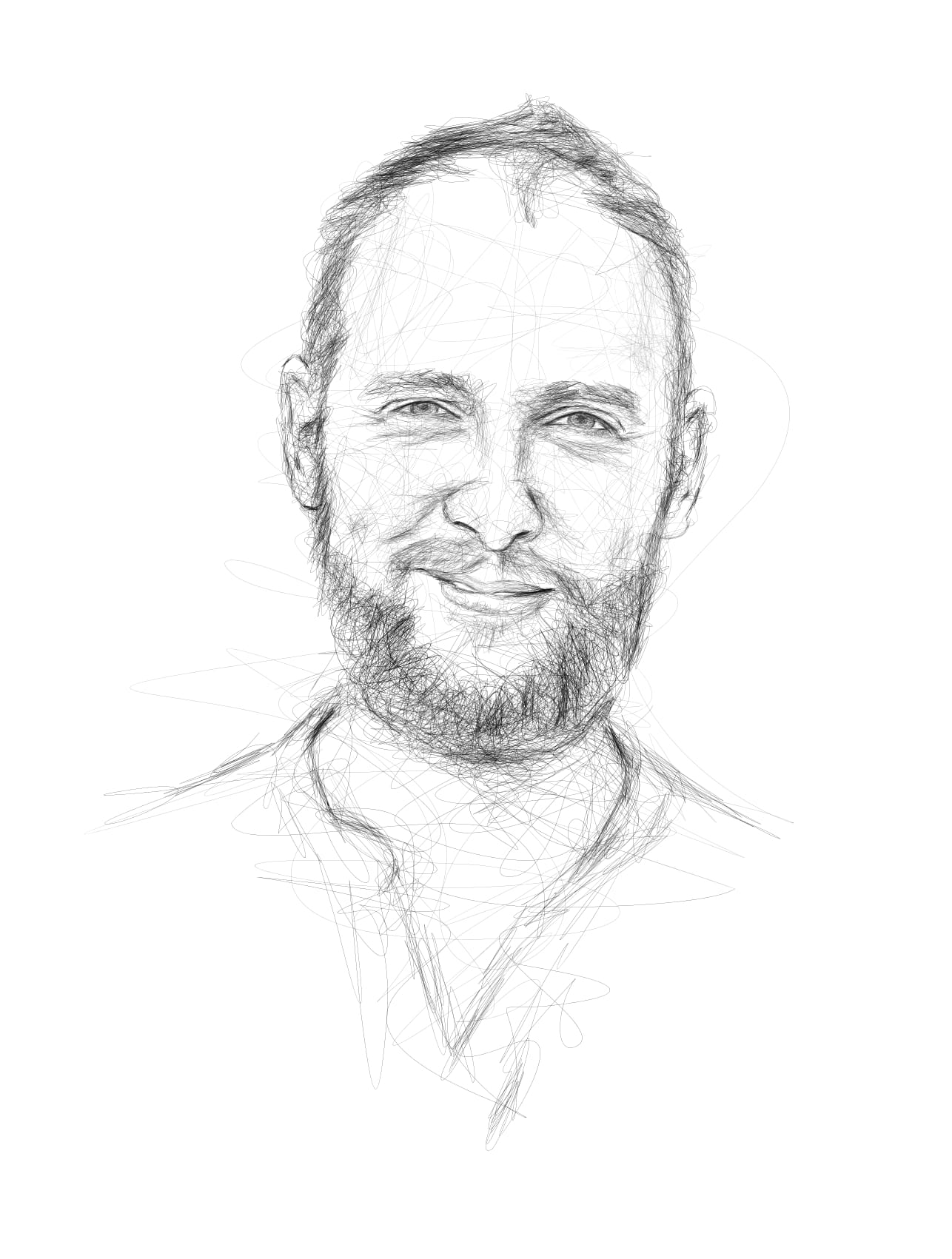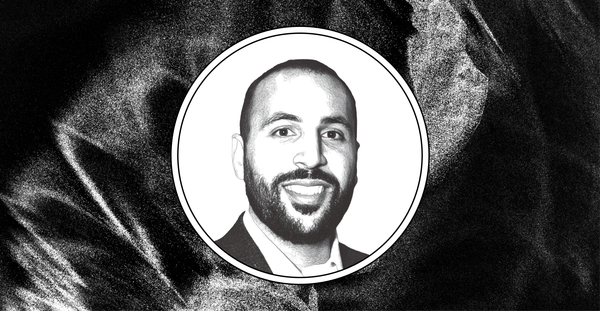Climate, Conflict, and Direct Air Capture with Airhive’s Rory Brown
Rory Brown is the CEO and co-founder of Airhive, a UK startup pioneering a hybrid geochemical-DAC technology that harnesses fluidization to achieve rapid, cost-effective CO2 removal.
Rory Brown is the CEO and co-founder of Airhive, a UK startup pioneering a hybrid geochemical-DAC technology that harnesses fluidization to achieve rapid, cost-effective CO2 removal.

What led you to start Airhive?
My previous career spanned about 15 years in international development with a focus on conflict and stabilization. I worked in the Middle East, East Africa, and South Asia, addressing complex issues related to war and peace in those regions.
My previous job was always a mixture of doing strategic assessments and then trying to design and implement tactical interventions. You’d look at the big picture, usually at the country level, and look to assess the drivers of conflict – social, economic, ethnosectarian, etc. And then you have to identify which places where there is a need for specific intervention and where you can have the greatest impact.
Despite coming from a family of environmental scientists and naturalists, I found myself struggling to engage with climate news while working in those challenging places. When you’re in a busy job with its own set of stresses, I was just not able to process this news because it seemed so big, grim, and difficult to deal with. It felt like the headlines were only getting worse and I was continuing to ignore a really major issue.
I was also seeing the effects of climate change in a lot of those countries. Before these first really hot summers in Europe over the past half-decade where climate impacts have started to really sink in in people’s lived experiences, climate change was very much a visible thing already in the 2010s in most of the countries I worked in. You’d see it was a worse drought than ever before, or a river running dry for the first time, or the worst floods. Once I started asking people about changes in the weather, almost everyone you would speak to would say, “The weather has been different this year than it was the year before. We can no longer rely on when the rains come. It’s difficult to plan crops. The droughts or rains are becoming much more frequent and unpredictable,” all that stuff. In these areas the living conditions were already difficult economically and politically, and climate change was just making things worse.
Why did you decide to focus on direct air capture as a climate solution?
I guess I followed the same pattern from my old work: strategic assessment and working out where I thought the right tactical intervention would be to have the biggest tangible impact. I went back to school during COVID-19 part-time while doing what ended up being my last job in my previous career. A big part of what we did in the studies was looking at integrated assessment models: the big simulations of climate, energy, and economic systems that undergird all the Intergovernmental Panel on Climate Change (IPCC) assessments. I was thinking about how we get a realistic pathway for us globally and socioeconomically to limit temperatures while still meeting our current standards of living.
The one big thing that came through in 2020 was that, in those models, even after doing levels of decarbonization that strain the limits of realism, they mostly cannot find viable paths to limiting global temperatures to 1.5°C (the Paris Agreement target) without large-scale carbon removal on the scale of hundreds of billions of tons. At the time, there was bioenergy with carbon capture and storage (BECCS) and direct air capture (DAC) included as technology blocks in the models, but this was before there was a single DAC plant commercially operating anywhere in the world. That is a huge difference between the reality of a particular technology set and how much it is modeled to do in the big picture of how we limit climate change.
So that’s how I came to carbon removal initially. I spent the second half of my degree trying to prove to myself which of the removal pathways was the right one and it became clear to me that DAC is the one that has essentially no biophysical limits to scale. Its limits to scale are set by price and by access to renewable energy, but both of those are essentially solvable human things and are not intrinsic to the limits of the Earth system.
I also took the view that it’s not fair to load nature with so much carbon sequestration when there’s a crisis around biodiversity that’s as large as the carbon crisis. You probably can’t fit all the carbon taken from the geosphere into the biosphere anyway, but trying to get anywhere close to that would put immense stress on nature at a time when we should be reducing stress on that system.
Carbon emissions are overwhelmingly a result of industrial activity, and I think it’s fundamentally an industrial responsibility to pull carbon back out of the atmosphere and put it back into the geosphere, where we got it from in the first place.
What makes Airhive’s approach to direct air capture unique?
I’m fortunate to have met a co-founder who emphasized the importance of developing a technology that’s cost-effective, energy-efficient, and simple in design. Most crucially, he stressed that it should be something we can bring to market rapidly. We didn’t want to rely on fundamental breakthroughs in materials or processes because we didn’t think the urgency of the climate crisis allowed for that.
It’s always a delicate balance because if you just retrofit some existing equipment then you don’t have any intellectual property, which you need to scale a startup and attract venture capital. So we had to walk a balance between leveraging established industrial processes, technology, and engineering expertise with robust supply chains, while still developing our own innovative approach to the technology. This strategy allowed us to benefit from proven industrial methods and materials while creating a novel solution that could be proprietary to our startup.
At Airhive we took something called fluidization and optimized it for DAC. Fluidization is a well-understood process used in hydrocracking, food and pharmaceuticals, mineral processing, petrochemicals, and more. By ‘optimized for DAC,’ I mean we’ve adapted fluidization to efficiently process vast volumes of air at high speeds.
The version we have is based on a horizontal fluidized bed. We started in the summer of 2022 and now have kiloton-scale commercial pilots going into operation later this year. So we’ve made that jump in just over 2 years. We’ve refined our original formulation to optimize costs, energy usage, and other factors like water consumption, and we’re already on our third generation because it’s really important to iterate designs rapidly. We think we are in the top tier across all the metrics that matter, but it’s impossible to say who is best in class because there are lots of fantastic technologies out there and there will be lots that should survive.
What projects are you currently working on?
We’ve got one in-house pilot which we’ll be taking delivery of this summer. We’ve already taken delivery of one piece, so we’re doing pilot-level testing at the moment, but the full system is arriving soon.
Then there are two separate commercial pilots. One with Coca-Cola Europacific Partners, which is a 1,000-ton system. The location is yet to be determined, but we should know within the next few weeks. That’s an exciting one, especially for utilization.
People might say, “Well, why is your DAC going towards utilization?” We think there are a lot of really important utilization markets where there isn’t an obvious alternative to CO2 as an industrial feedstock. Beverages is one of them. You’re not going to drink a non-fizzy Coke, so if we can supply air-captured, recycled CO2 to them versus their existing sources, there’s a big decarbonization benefit from that. This is exciting for us to see Coca-Cola’s ambition to bring in novel technologies at a very early stage to explore their potential to contribute to their overall pathway to net zero.
Another project is with Deep Sky, a Canadian project developer that’s building a pilot facility. We’re putting a 1,000-ton system for them that’s arriving at their site in September. It’s sort of a second generation of our commercial grade system, because we’ve already had a breakthrough in our capture system design in the three-month gap between the Coca-Cola system and the Deep Sky system.
A lot of our ability to have quickly iterate on our designs is because people understand fluidized beds. When we brought the idea of the novel capture system design to our manufacturers, thinking it may take a year and a half, they said “Oh yeah, that’s interesting, we think we could do that.” It only took a month to do the design and we ended up with a capture system that was five times smaller. The speed of iteration is amazing because of the existing engineering expertise for our specific process technology.
For both Coca-Cola and Deep Sky, we’re excited to demonstrate big systems for DAC with fantastic cost characteristics. The other thing is they represent the first opportunity for commercial partnerships, imbued with the potential to grow to larger and longer-term partnerships. We’ve loved working with each of them so far and are really looking forward to what happens after these pilots.
Why is now the right time for direct air capture?
Conflict is growing globally. We’re definitely in a more unstable time than we’ve been really since the Second World War. There is potential for really significant increases in conflict, the worst since three generations ago.
If the geopolitical situation escalates and gets significantly worse, it will make addressing climate change even more challenging. As tensions rise between great powers and geopolitical divisions widen, the space for international collaboration on climate will shrink. Lack of cooperation hinders supply chains and the sharing of technologies that are vital for making progress on climate solutions. Increased conflict makes climate action much more difficult.
The flip side is that climate impacts are happening way faster than people predicted even a couple of decades ago. Particularly if the tipping elements come in. If we hit a point where the Amazon flips or you’ve got the collapse of ice sheets in the Arctic, you potentially lock in a bunch of reinforcing, big tipping elements.
The climate scientists have a really difficult balance between not making it too doom and gloom while still cultivating a sense of urgency. When you spend a lot of time in conflict environments, it gives you an idea of how bad things can get. I think that’s maybe a little different from how people often perceive it: it’s hard to imagine your normal existence deteriorating rapidly without having directly experienced it.
If we’re on track for a 3°C world, the level of conflict we’ve experienced in the last century is nothing like what we will face in the future. It will be much, much more severe. It’s not just about things like fatalities; it’s things like whole countries becoming unlivable spaces, and the knock-on effects on global stability. That weighs on me.
There’s an understandable need in how you communicate as a climate startup or anyone doing climate action to have a positive vision. For a lot of people, their whole comms approach and visual language is positive framing: bright colors, clouds, and images of nature. I completely understand all that, but I also think we can’t retreat from an acknowledgment that we are not responding to a positive opportunity. This is about staving off disaster. You have to be able to hold the positive and the negative, the light and the dark, in a dynamic tension.
How do you see direct air capture fitting into climate change mitigation efforts more broadly?
This is a global effort. Huge numbers of people across the globe are working together towards the same goal. Each country and jurisdiction will find its own path to progress, whether it’s addressing climate change broadly, carbon removal in general, or specifically direct air capture.
The approach any specific place takes needs to align with the economic and political culture in that location, while also considering factors such as natural resources—considering who has CO2 storage capacity, a largely carbon-free electricity grid, available land, water resources, and the state of government finances to name a few. For instance, in Europe overall, government balance sheets are currently strained.
So there isn’t one right approach. For us, we are very focused on scaling projects across multiple countries, and looking for opportunities to just get stuff out into the world quickly in a commercial context. We do not want to rely on fits and bursts of subsidy or support. Where governments want to help enable it that’s great, but fundamentally we need to be an industry that stands on its own feet and can have meaningful, positive, incremental climate impact moving in the right direction over the next decade or so.
Right now we are all very focused on delivery, focused on scaling the team, and getting projects built. We’re actively seeking talented individuals across various domains, including technical roles (technology development, project development, operations) and commercial positions (supply chain management, business development). Many of our current team members joined us through direct outreach, and they have been fantastic. We encourage anyone interested in our mission to reach out.
HAUS specializes in public relations and creative services for deep tech startups.




